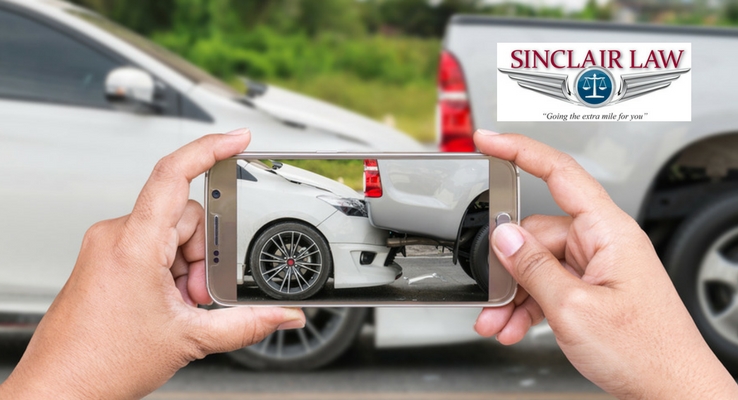There are few pieces of evidence that can have as great an impact on a personal injury claim as a photograph. Even in slip-and-fall accidents or incidents like dog bite attacks, they can fill in valuable details about the scene and circumstances that led to your injuries.
In a car or motorcycle accident, they can be even more critical than in most other types of claims. This is because auto accidents are usually sudden traumatic events that can be difficult for participants to remember the details of. There’s also the simple fact that normally, in the interest of public safety, police will clear the accident scene as soon as they arrive and start their initial report. Photographs record things as they really were and are not dependent on or subject to the vagaries of human memory.
Photos being of such great importance, I would like to offer this short primer on how to take photos that will help bolster your personal injury claim.
Document Time, Date and Shoot Stills
One very important thing to remember is no matter how informative your photos are, the at-fault party’s insurance company will do their best to contest their validity. Be sure to engage the time and date stamp on your camera whenever possible to help solidify your claim that the photos were actually taken immediately after the accident occurred before anything has been tampered with.
Also, people love to shoot videos, but contrary to popular belief, still photos are of much more value in an auto accident claim. Videos can make it difficult to pick out small details that could be of great importance to your case. Still photos can be enlarged, details can be studied, and they rarely require any explanation of what they are showing.
Capture the Area
Take a tip from professional photographers and work from the outside in and try to tell a story as you move forward. Wide angle shots including any road signs, such as stop or yield signs, intersections and road conditions are a great place to start. Be sure to include pictures of the sky showing the lighting and weather conditions.
Many times defendants will attempt to shift responsibility for the accident to poor weather or road conditions. If they claim slick roads contributed to the accident, your photos of dry roads and clear skies will destroy these claims.
The Devil’s in the Details
As you work your way in, be conscious of capturing details to protect your version of events. By this I mean if you take pictures of skid marks include some object that gives scale to their length. When you take photos of the damage to your car or bike, be sure to include some shots containing the license plates of the vehicles or other unique features that can be used to verify it is yours.
You would be surprised how often defense attorneys will argue that damages have been faked to boost the value of a claim.
By the same token, if you are photographing injuries, start with wide shots and work down to close-ups so you can prove the injury in the pictures is actually yours.
Never Enough Pictures
This is another area where you can take a cue from pros. Watch professional photographers at almost any event. They don’t shoot, look, shoot and look. They point their cameras and let the shutter fly.
It is the law of averages. If they shoot 1,000 pictures, odds are there will be one or two that will come out perfect. At an accident scene, you should think the same way and take as many pictures as possible, from as many different angles as you can.
Pictures can play a major role in a personal injury case, but I feel a word of caution should be added here. No picture is worth risking further injury. First thing after an accident occurs, call 911 and get emergency personnel on the way just in case there are serious injuries or dangers you’re unaware of. Then start taking your pictures. Never under any circumstances, though, should you place yourself or anyone else at risk for the sake of documenting the scene.

